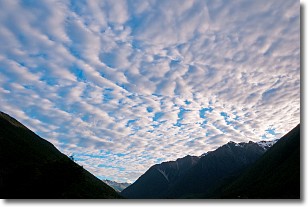Weather Alert in Texas
Flood Warning issued June 15 at 2:00PM CDT until June 18 at 10:00AM CDT by NWS Houston/Galveston TX
AREAS AFFECTED: Brazos, TX; Grimes, TX; Madison, TX
DESCRIPTION: ...The Flood Warning is extended for the following rivers in Texas... Navasota River near Normangee affecting Brazos, Grimes and Madison Counties. San Bernard River near Boling affecting Brazoria, Fort Bend and Wharton Counties. ...The Flood Warning continues for the following rivers in Texas... San Bernard River near Sweeny affecting Brazoria County. Trinity River near Crockett affecting Trinity, Houston, Madison and Walker Counties. Trinity River at Riverside affecting Trinity, Walker, San Jacinto and Polk Counties. Trinity River at Liberty affecting Liberty County. Trinity River near Moss Bluff affecting Chambers and Liberty Counties. For the Trinity River...including Crockett, Riverside, Moss Bluff, Liberty...Moderate flooding is forecast. For the Navasota River...including Normangee...Moderate flooding is forecast. For the San Bernard River...including Sweeny, Boling...Minor flooding is forecast. * WHAT...Moderate flooding is occurring and moderate flooding is forecast. * WHERE...Navasota River near Normangee. * WHEN...Until late Wednesday morning. * IMPACTS...At 18.0 feet, Moderate lowland flooding begins as three channels merge into one below State Highway 21. There is widespread inundation of the floodplain in the vicinity of the gage with the river more than 1.5 miles wide. Long Trussel Road in northeast Brazos County below State Highway 21 becomes inundated. * ADDITIONAL DETAILS... - At 1:00 PM CDT Sunday the stage was 19.7 feet. - Bankfull stage is 12.0 feet. - Recent Activity...The maximum river stage in the 24 hours ending at 1:00 PM CDT Sunday was 21.6 feet. - Forecast...The river is expected to fall below flood stage late Tuesday evening and continue falling to 13.5 feet early Friday afternoon. - Flood stage is 15.0 feet. - Flood History...This crest compares to a previous crest of 19.8 feet on 05/28/2015. - http://www.weather.gov/safety/flood
INSTRUCTION: Motorists should not attempt to drive around barricades or drive cars through flooded areas. Turn around, don't drown when encountering flooded roads. Most flood deaths occur in vehicles. Additional information is available at www.weather.gov/hgx. The next statement will be issued by Monday morning at 700 AM CDT.
Want more detail? Get the Complete 7 Day and Night Detailed Forecast!
Current U.S. National Radar--Current
The Current National Weather Radar is shown below with a UTC Time (subtract 5 hours from UTC to get Eastern Time).

National Weather Forecast--Current
The Current National Weather Forecast and National Weather Map are shown below.

National Weather Forecast for Tomorrow
Tomorrow National Weather Forecast and Tomorrow National Weather Map are show below.

North America Water Vapor (Moisture)
This map shows recent moisture content over North America. Bright and colored areas show high moisture (ie, clouds); brown indicates very little moisture present; black indicates no moisture.

Weather Topic: What are Stratus Clouds?
Home - Education - Cloud Types - Stratus Clouds
 Next Topic: Wall Clouds
Next Topic: Wall Clouds
Stratus clouds are similar to altostratus clouds, but form at a
lower altitude and are identified by their fog-like appearance, lacking the
distinguishing features of most clouds.
Stratus clouds are wider than most clouds, and their base has a smooth, uniform
look which is lighter in color than a nimbostratus cloud.
The presence of a stratus cloud indicates the possibility of minor precipitation,
such as drizzle, but heavier precipitation does not typically arrive in the form
of a stratus cloud.
Next Topic: Wall Clouds
Weather Topic: What are Altocumulus Clouds?
Home - Education - Cloud Types - Altocumulus Clouds
 Next Topic: Altostratus Clouds
Next Topic: Altostratus Clouds
Similar to cirrocumulus clouds, altocumulus clouds are
characterized by cloud patches. They are distinguished by larger cloudlets
than cirrocumulus clouds but are still smaller than stratocumulus clouds.
Altocumulus clouds most commonly form in middle altitudes (between 2 and 5 km)
and may resemble, at times, the shape of a flying saucer.
These uncommon formations, called altocumulus lenticularis, are created by uplift
in the atmosphere and are most often seen in close proximity to mountains.
Next Topic: Altostratus Clouds
Current conditions powered by WeatherAPI.com




